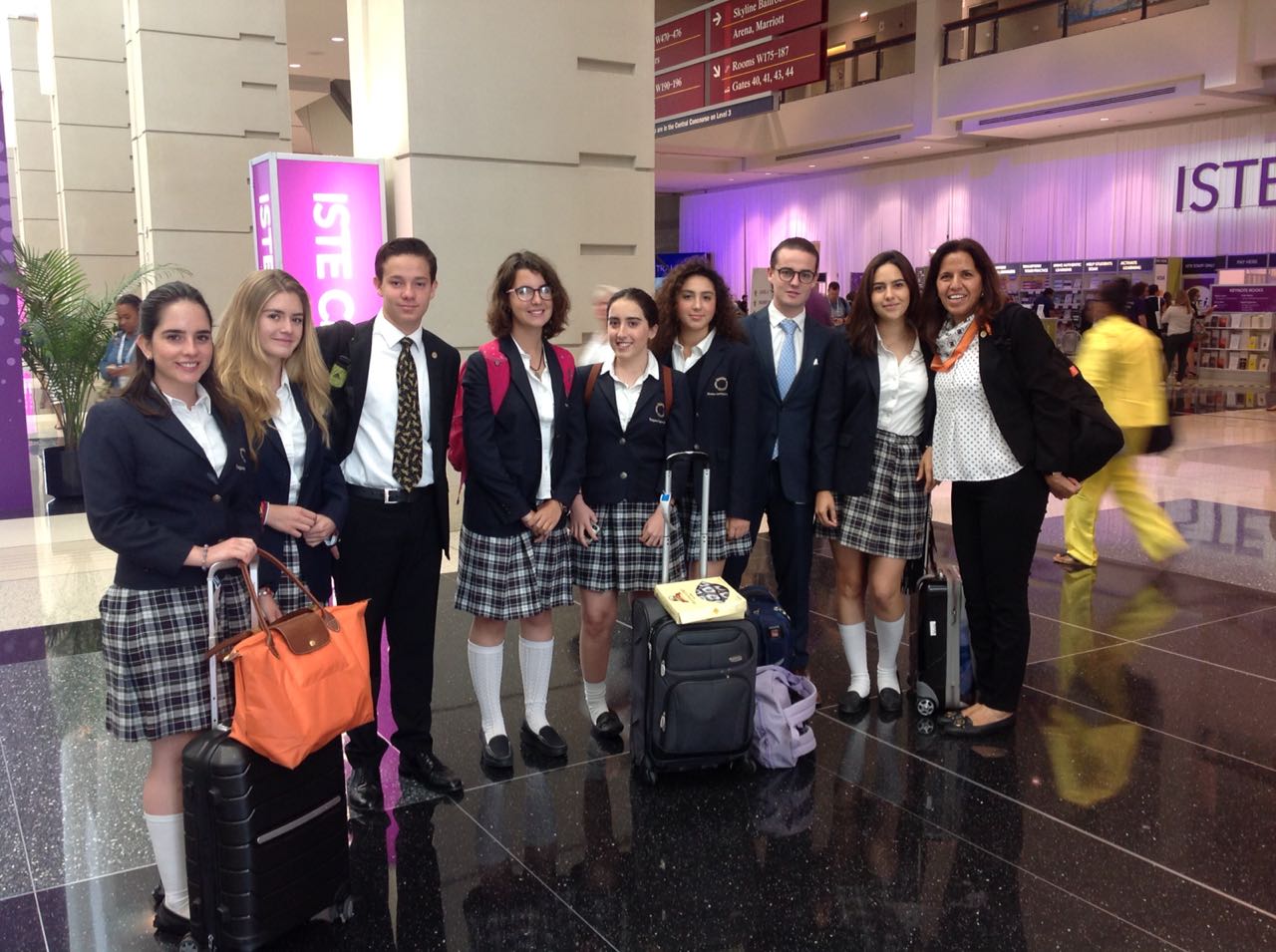If you think of Catholic education as studying the Catechism and memorizing prayers, you are seeing just a small part of the picture.
Today’s Catholic school is advancing in the use of technology to learn – and evangelize. A case in point, a team of students from Colegio Cumbres Alpes de Queretaro, about two hours from Mexico City, were among the thousands of students and teachers (many from Catholic schools) participating in ISTE 2018, June 24-27 at McCormick Place in Chicago.
The International Society for Technology in Education (ISTE) is a nonprofit organization that works with the global education community to accelerate the use of technology to solve tough problems and inspire innovation. Our worldwide network believes in the potential technology holds to transform teaching and learning. Learn more at iste.org.
The Chicago event included hundreds of exhibits and demonstrations where students could share their projects and see what others have accomplished. The Queretaro team put together a presentation called “Experience the Independence of Mexico in 1810 with VR”.
ZENIT had the opportunity to visit with the teacher leading the team, María Elena Urbán Salazar, who holds a Masters Degree in Educational Technology.
ZENIT: Tell us about your team.
Maria Elena: We had 8 students from 10th and 11th grades attending the event. About 60 students at the school were involved in the preparation of the project, along with five teachers in Spanish, English, history, art, and technology.
ZENIT: How does someone experience the VR presentation?
Maria Elena: For the full effect you need the YOUTUBE app. installed on your mobile device and wear VR glasses. The movie link is: https://youtu.be/dNoACnIOkNE . To watch the movie, you need to choose the “Cardboard” option from your phone in order to divide it and introduce it in the glasses to be ready to live the virtual experience.
ZENIT: But you can watch it without the glasses at the link,
Maria Elena: Of course. The video was recorded with a 360º camera, so you visualize it in that dimension. The movie could be watched without the VR glasses through a laptop or tablet, but you will have to use the mouse to move around.
ZENIT: What does the experience of creating the presentation to teach the students?
Maria Elena: It teaches them teamwork, to be proactive leaders, using technology for challenge resolution, and the importance of art and sensibility to communicate. This is how it is demonstrated that all experiential learning develops abilities, knowledge, and formation of the person for life.
ZENIT: What do the students gain from attending the conference?
Maria Elena: The students are able to expose their project to professors and principals worldwide and feel proud of their country’s culture and its people. And they can relate to other new projects with other educational institutions, creating a globalized community to share their learnings.
ZENIT: How does ISTE help you as a teacher?
Maria Elena: ISTE offers the international standards for students, a “How to Use Guide” to apply technology in our classrooms with XXI century students. This is how the Colegio Cumbres Alpes de Queretaro teachers use it to focus on their subjects and create collaborative projects, transforming the classroom experience into an educational technology active learning opportunity.
ZENIT: So…technology plays a key role in your school?
Maria Elena: Yes. We are known for being an avant -grade school, forming young entrepreneurs with Christian values, who want to create change in society. They can take advantage of their skills, creativity, and innovation in the solution of problems and meeting society’s needs.

ISTE 2018 team from Colegio Cumbres Alpes de Queretaro,
Catholic Educators Embrace Technology
Students Plug into Future at ISTE in Chicago


